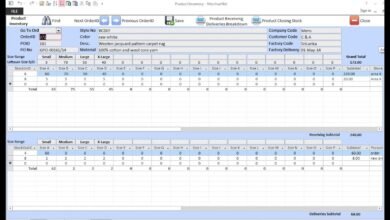Title: Understanding TRCKPRF : A Comprehensive Guide to Tracking Performance

Introduction
In today’s fast-paced digital world, tracking performance is more crucial than ever. Whether you’re a business looking to analyze marketing efforts or an individual monitoring personal goals, having reliable metrics is essential. One of the emerging solutions in this realm is TRCKPRF. This article delves into what TRCKPRF is, how it functions, its benefits, and its applications across various sectors.
What is TRCKPRF?
TRCKPRF is a performance tracking framework designed to help users monitor and analyze their performance across multiple domains. The name itself stands for “track performance,” and it serves as a tool for individuals and organizations to keep tabs on their goals, projects, and overall effectiveness.
With TRCKPRF, users can set specific performance indicators, monitor progress, and make data-driven decisions based on the insights gathered. This framework is particularly valuable in industries where performance metrics directly impact revenue and success.
How Does TRCKPRF Work?
TRCKPRF operates on a simple yet effective principle: data collection, analysis, and feedback. Here’s a step-by-step breakdown of how it works:
- Data Collection: The first step in the TRCKPRF process is to gather relevant data. This can include metrics from various sources, such as social media, website analytics, sales figures, and more.
- Performance Indicators: Users define key performance indicators (KPIs) that align with their specific objectives. These KPIs are the benchmarks against which progress will be measured.
- Analysis: Once the data is collected, TRCKPRF analyzes it to identify trends, patterns, and areas for improvement. Advanced algorithms may be employed to derive insights that are not immediately apparent.
- Feedback and Reporting: The final step involves generating reports that summarize the findings. These reports can provide actionable insights, helping users understand what is working and what needs adjustment.
Benefits of Using TRCKPRF
Implementing TRCKPRF offers several advantages:
- Enhanced Decision-Making: By relying on data-driven insights, users can make informed decisions that are more likely to yield positive results.
- Increased Accountability: With clear performance indicators in place, team members can be held accountable for their contributions, fostering a culture of responsibility.
- Continuous Improvement: The cyclical nature of data collection and analysis encourages continuous improvement. Users can regularly reassess their strategies and make necessary adjustments.
- Time and Resource Efficiency: Automating the tracking and reporting process saves time and resources, allowing teams to focus on executing their strategies rather than getting bogged down in data management.
- Competitive Advantage: Organizations that effectively track their performance often gain a competitive edge. By staying ahead of trends and addressing issues promptly, they can outperform their rivals.
Applications of TRCKPRF
TRCKPRF can be applied across various sectors, including:
- Marketing: In marketing, TRCKPRF can track campaign performance, social media engagement, and conversion rates. Marketers can adjust their strategies based on real-time feedback to maximize ROI.
- Sales: Sales teams can use TRCKPRF to monitor their performance against sales targets, identify top-performing products, and optimize their sales tactics.
- Project Management: In project management, TRCKPRF can help teams assess the progress of projects against timelines and budgets, ensuring that deliverables are met.
- Personal Development: Individuals can utilize TRCKPRF to track personal goals, such as fitness milestones, educational achievements, or career advancement.
- Customer Service: Companies can monitor customer service metrics, such as response times and satisfaction scores, using TRCKPRF to enhance their service delivery.
Getting Started with TRCKPRF
For those interested in adopting TRCKPRF, the following steps can help facilitate the process:
- Identify Objectives: Start by defining what you want to achieve. Clear objectives will guide the entire tracking process.
- Select Key Performance Indicators: Choose KPIs that are relevant to your objectives. Make sure they are measurable and aligned with your goals.
- Choose a Tool or Software: While TRCKPRF can be implemented manually, many software solutions can streamline the process. Look for tools that integrate data sources and provide robust analytics.
- Regularly Review and Adjust: Set up a schedule to review your performance data. Regularly adjusting your strategies based on insights will maximize effectiveness.
- Engage Your Team: If you’re working in a team setting, involve your team members in the TRCKPRF process. Their input can provide valuable insights and enhance accountability.
Challenges and Considerations
While TRCKPRF offers numerous benefits, there are challenges to consider:
- Data Overload: With the abundance of data available, it can be overwhelming to determine which metrics are most important.
- Implementation Costs: Depending on the tools and software selected, there may be costs associated with implementing TRCKPRF.
- Resistance to Change: Some individuals may be resistant to adopting new performance tracking methods. Effective change management strategies are essential to overcome this.
Conclusion
TRCKPRF is a powerful tool for tracking performance across various domains. By harnessing data-driven insights, individuals and organizations can enhance their decision-making, accountability, and overall effectiveness. As we navigate an increasingly competitive landscape, adopting frameworks like TRCKPRF can provide a significant advantage. Whether you’re looking to boost marketing efforts, streamline project management, or achieve personal goals, TRCKPRF is a valuable resource that can guide your path to success.



